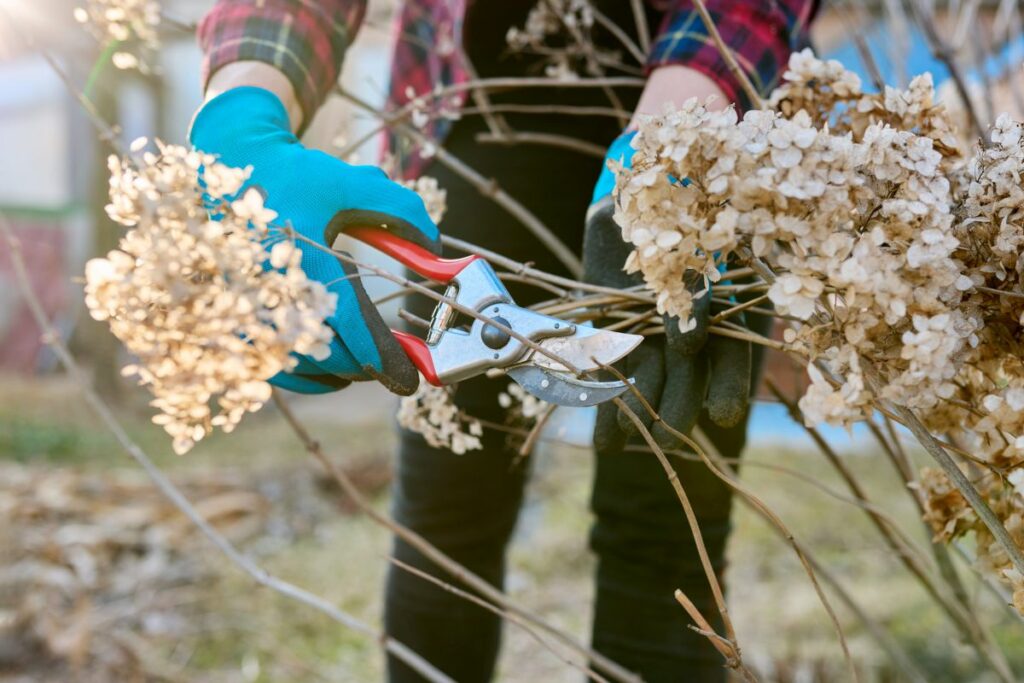Think you know how to prune hydrangeas?
You might be doing it all wrong!
Learn the right way to prune hydrangeas for gorgeous blooms.
Ready to transform your garden?
Let’s get started!
Proper Hydrangea Pruning Techniques

1. Recognizing Your Hydrangea Variety
Firstly, identify your hydrangea species to ensure you apply the correct pruning method. The kind you own, whether it be mophead, lacecap, panicle, or smooth, directly affects the pruning approach.
2. Spotting Unhealthy Stems
Examine your hydrangea for any stems that show signs of damage or disease. Using shears, carefully remove these to promote the plant’s health.
3. Trimming Aged Stems
When dealing with mophead or lacecap hydrangeas, trim stems that are older than three years to spur new growth. For panicle hydrangeas, you can cut back up to half of last year’s growth to increase blooming.
4. Pruning Near Vigorous Buds
Make cuts slightly above robust buds, ensuring you leave behind at least two pairs of buds per stem. Angle cuts at 45 degrees to aid in healing and to avoid water buildup.
5. Avoid Excessive Pruning
Limit pruning to no more than one-third of the plant’s total volume each year. Excessive removal can hinder growth and lessen the number of blooms.
Pruning Hydrangeas: Helpful Pointers

- Timing: Trim hydrangeas late in the winter or at the start of spring, prior to the onset of fresh growth.
- Tools: Utilize sharp, sanitized pruning shears for clean incisions, which help avert disease transmission.
- Identification: If the variety of your hydrangea is unknown, prune after flowering to avoid cutting off future blooms.

